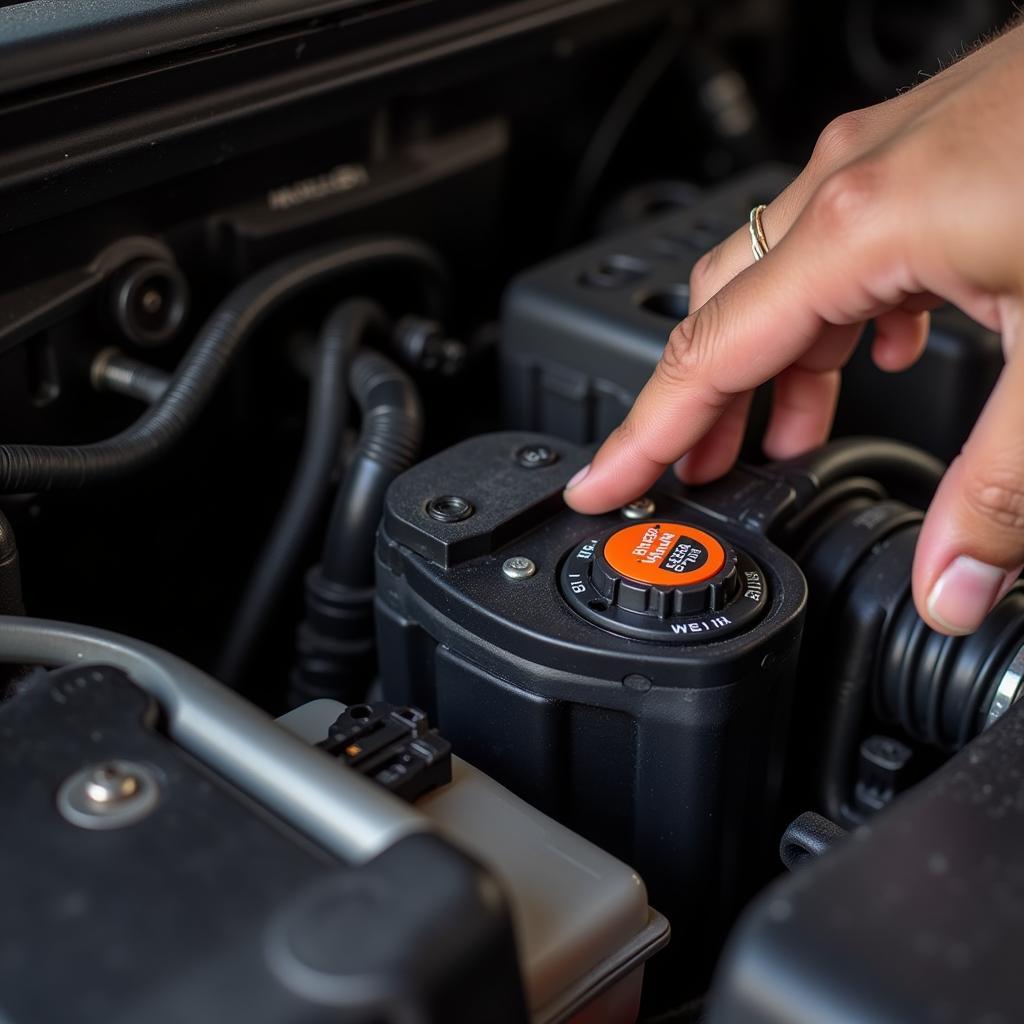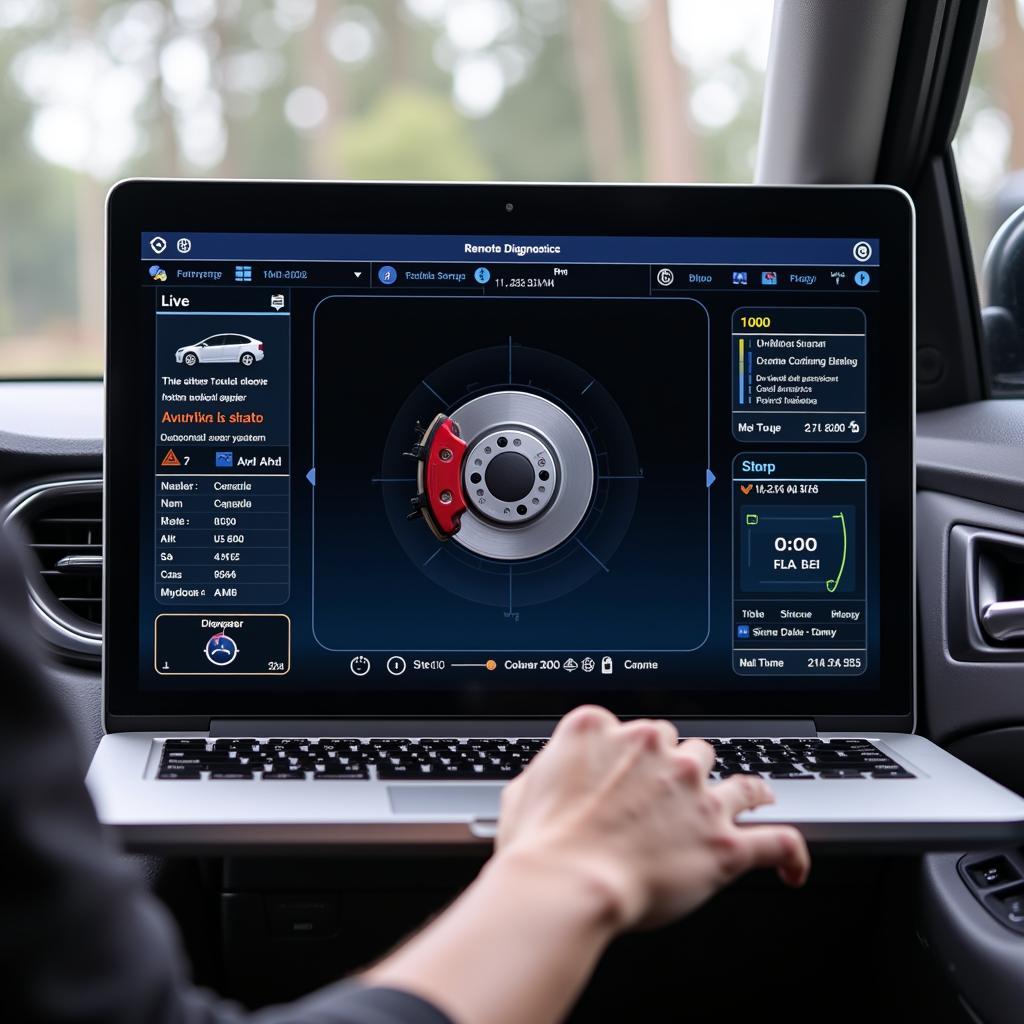The dreaded “Check Brake” warning flashing on your Hyundai Sonata’s dashboard can trigger a wave of anxiety. Is it a minor hiccup or a major malfunction? While this warning often signals a problem within the braking system, it doesn’t always mean a complete brake failure is imminent. This article will guide you through understanding the “Check Brake” warning in your Hyundai Sonata and provide potential solutions to get you back on the road safely.
Common Causes of the “Check Brake” Warning in Hyundai Sonatas
Several factors can trigger the “Check Brake” warning on your Hyundai Sonata. Here are some of the most common culprits:
- Low Brake Fluid: Brake fluid is the lifeblood of your car’s braking system. If the fluid level drops too low, often due to a leak, the warning light will illuminate.
- Worn Brake Pads: As your brake pads wear down over time, the brake fluid level in the reservoir naturally decreases. If the pads wear thin enough, the “Check Brake” light might activate.
- Faulty Brake Light Switch: The brake light switch, activated when you press the brake pedal, can malfunction and trigger the warning.
- ABS Issue: A problem with the Anti-lock Braking System (ABS), such as a faulty sensor, can also illuminate the “Check Brake” light.
- Parking Brake Engaged: While seemingly obvious, sometimes the parking brake isn’t fully disengaged, leading to the warning.
Diagnosing Your Hyundai Sonata’s “Check Brake” Warning
Before panicking, try these simple checks:
- Check Your Parking Brake: Ensure your parking brake is fully released. It might seem obvious, but it’s a common oversight.
- Inspect Brake Fluid Level: Locate the brake fluid reservoir under the hood (refer to your owner’s manual) and check the fluid level. If it’s low, adding brake fluid might temporarily resolve the issue, but a mechanic should investigate the cause of the low fluid.
 Checking Brake Fluid Level in a Hyundai Sonata
Checking Brake Fluid Level in a Hyundai Sonata
When to Seek Professional Help
If the “Check Brake” warning persists or you notice any of the following, seek professional help immediately:
- Spongy or Soft Brake Pedal: This indicates a potential loss of brake pressure, a serious safety concern.
- Grinding Noises When Braking: A grinding sound usually means your brake pads are completely worn and require immediate replacement.
- Pulling to One Side When Braking: This could signify uneven brake pad wear or a more serious issue with the hydraulic system.
Remote Diagnostics and Software Solutions for Hyundai Sonata Brake Issues
In today’s technologically advanced world, remote diagnostics and software solutions are becoming increasingly prevalent in the automotive industry. For certain Hyundai Sonata brake issues, remote technicians can:
- Diagnose the Problem: By connecting remotely to your vehicle’s onboard computer, skilled technicians can retrieve diagnostic trouble codes (DTCs) and pinpoint the root cause of the “Check Brake” warning.
- Software Updates and Recalibrations: In some instances, a software glitch or outdated module might trigger the warning. Remote technicians can install the latest software updates and perform necessary recalibrations to resolve the issue.
 Remote Diagnostics for Hyundai Sonata Brake Issues
Remote Diagnostics for Hyundai Sonata Brake Issues
“Remote diagnostics have revolutionized how we address certain car problems,” says Sarah Chen, a certified automotive technician specializing in Hyundai vehicles. “We can often provide quick and efficient solutions remotely, saving car owners time and hassle.”
Preventing Future “Check Brake” Warnings in Your Hyundai Sonata
Proactive maintenance is key to preventing future brake issues. Follow these tips to keep your Hyundai Sonata’s braking system in optimal condition:
- Regular Brake Inspections: Have your brakes inspected by a qualified mechanic at least once a year or every 12,000 miles, whichever comes first.
- Timely Brake Pad Replacement: Don’t wait for the grinding sounds! Replace brake pads as recommended by your owner’s manual or sooner if you notice any unusual wear.
- Quality Brake Fluid: Use high-quality brake fluid and have it flushed and replaced according to Hyundai’s recommended service intervals.
Conclusion
While the “Check Brake” warning on your Hyundai Sonata can be unsettling, understanding its potential causes and taking appropriate action is crucial. By following the guidelines in this article and seeking professional help when necessary, you can ensure the safety and longevity of your vehicle’s braking system. Remember, proactive maintenance is always the best approach to avoid unexpected and potentially dangerous brake-related problems.
